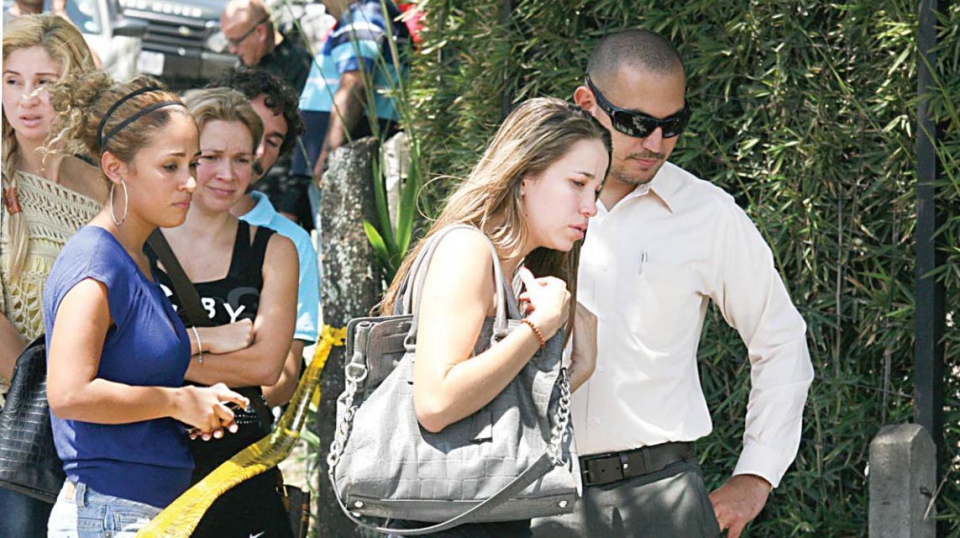Costa Rica News – If you have been reading the news the last few weeks in Costa Rica, there have been multiple tourists attacks and deaths.
Costa Rica’s recently-elected President Carlos Alvarado Quesada has officially hit 100 days in office. But his government is still struggling to stall worsening violence that is being driven by local criminal groups battling for control of domestic drug markets.
Costa Rica has long been known for its low crime rate and relatively stable economy, having escaped the bloody Cold War conflicts and brutal gang violence that have wrought havoc in other Central American countries. However, over recent years, the country has seen a continuous uptick in homicides.
In 2017, Costa Rica broke the country’s record in reported homicides with 603 and a homicide rate of 12.1 per 100,000 individuals. And 2018 isn’t looking much better.
In the first six months of this year, Costa Rica registered 302 homicides, which was 29 more than during the same period the year before, according to the Judicial Investigation Agency (Organismo de Investigación Judicial – OIJ). Officials project that 2018 will break the 2017 record with an estimated 625 homicides.
Costa Rica’s security situation has recently been dubbed a “free fall” by security analyst Paul Chaves from the Center for Criminology and Security Training (Centro Formación en Criminología y Seguridad). Despite that, the country still remains among Latin America’s least violent nations.
InSight Crime Analysis
Authorities and experts have explained the rise in violence by pointing to issues such as increasing criminal fragmentation, a greater presence of firearms and the country’s new role in the region’s drug map.
Costa Rica has, for years, served as a key transshipment point for Colombian cocaine heading to the United States and Europe.
From the beginning, local Costa Rican criminal outfits were contracted to guard drug shipments and move product across the country. Instead of making payments in dollars, transnational criminal organizations often paid local criminal groups in drugs, thus increasing the amount of product that stayed in Costa Rica, a trend seen in other key transshipment countries.
Over the years, with more drugs remaining in Costa Rica, illicit drug consumption has gone up, and local criminal actors have been quick to try to control increasingly lucrative local markets.
“On average, local groups can make upwards of $2,000 to $3,000 per day in one location. However, many groups sometimes control five, six or seven different drug dealing spots,” Costa Rica’s Minister of Public Security, Michael Soto, told InSight Crime.
Costa Rica’s official strategy to tackle drug trafficking has been primarily focused on targeting the leaders of local groups, which caused fragmentation and, in turn, a rise in violent competition for markets.
In 2012, officials arrested Marco Antonio Zamora Solórzano, alias “El Indio”, one of Costa Rica’s most notorious drug traffickers. Zamora had, for years, controlled key local drug markets, specifically in the southern part of the capital, San José. After his arrest, Zamora’s criminal structure fragmented into several groups that began to violently compete for access to drug markets in the capital, thus pushing up the homicide rate after 2013, according to Soto.
Upon capture, some of the most notorious micro-trafficking ring leaders have been able to direct local drug trafficking activities and the assassination of rivals from within prison walls.
Two recent examples include that of Leonel Mora Nuñez, alias “Gordo Leo,” who has been managing local drug sales and assassinations from a Costa Rican prisonsince his arrest in 2009, and Luis Angel Martinez Fajardo, alias “Pollo,” who continues to direct criminal activities in Costa Rica from a Nicaraguan prison.
In December, 2017, Fajardo was allegedly behind the killing of Nicaraguan national, Erwin Guido Toruño, alias “El Gringo”. The assassination of Toruño, who also played a key role in the San José drug trade, could also be behind increased violence as other groups rush to fill the void.
Along with increasing criminal fragmentation, a greater presence of firearmscould also be leading to increased homicide rates. In recent years, reports of arms trafficking rings allegedly connected to Mexico, Colombia and Panama have surfaced.
“There is a high availability of weapons. The origins of the weapons are unclear, but there is an important flow [of firearms] through the Central American corridor as a result of civil wars,” Walter Espinoza, the Director of the Judicial Investigation Agency (Organismo de Investigación Judicial – OIJ), told InSight Crime.
The announcement last week of the creation of a new public security plan could signal a shift in the government’s overall strategy to combat warring micro-trafficking groups. The initiative, called “Creating Security,” is based on Medellin’s public security program and seeks to increase collaborationbetween federal and community officials, and prioritize resources toward prevention and police operations in high risk areas.
Whether the initiative will be able to revert the trend of violence and insecurity remains to be seen.
*Deborah Bonello and Juan Diego Posada contributed reporting for this story.
by Bjorn Kjelstad, From Insight Crime

